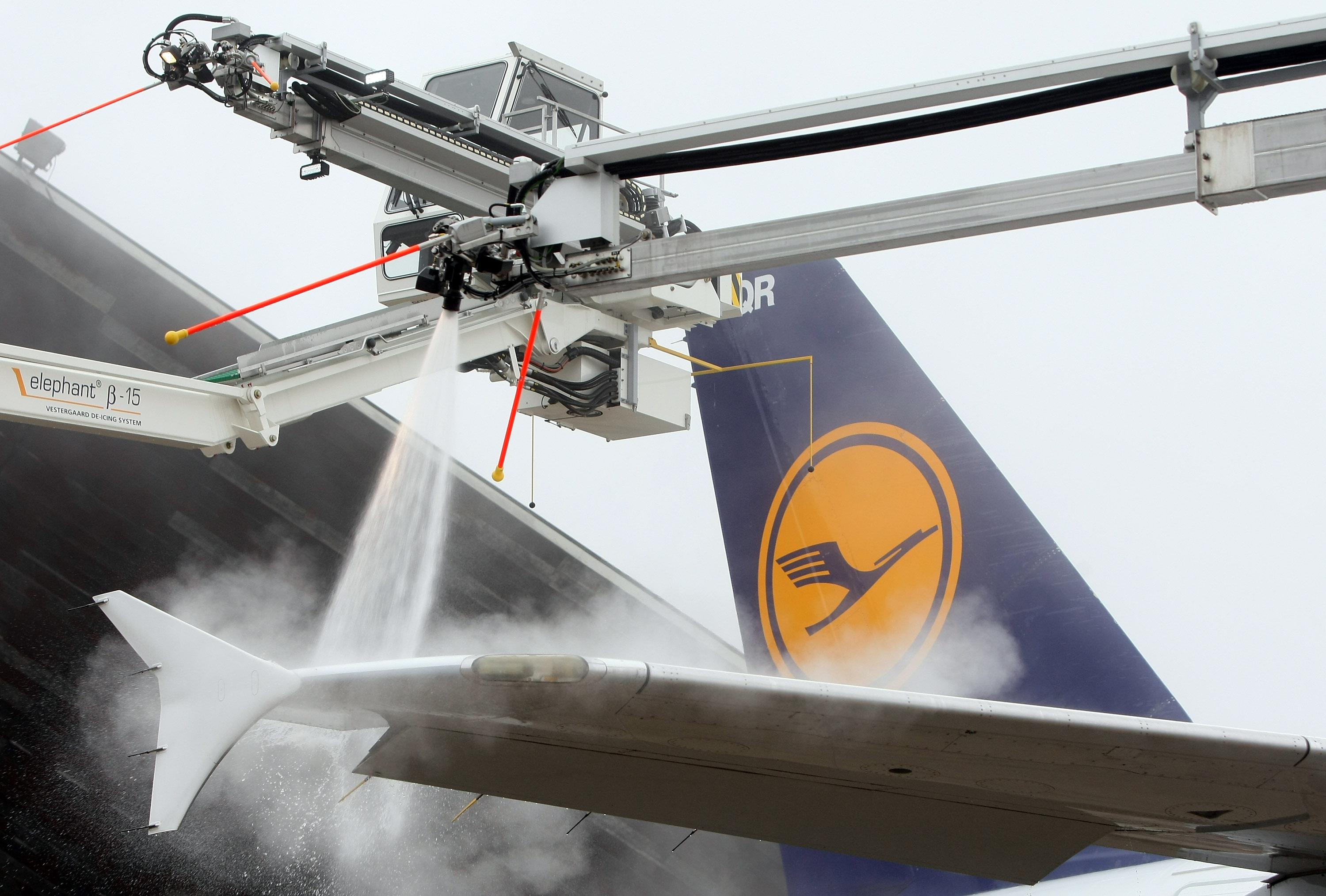This post originally appeared in Business Insider.
Extreme cold in the Midwest and Northeast has led airlines to cancel more than 6,000 U.S. flights over the past two days. Commercial planes are no strangers to extreme cold. Above 37,000 feet, the air is far colder than it is on the ground. Low temperatures on their own don’t stop air travel.
So why the problems at O’Hare? Cold weather is to blame, because it creates conditions that slow down airport operations. Heavy snow can reduce visibility to the point where officials decide it’s unsafe to takeoff and land. Ice buildup on aircraft is especially dangerous. In his book Cockpit Confidential, airline pilot and blogger Patrick Smith explains that even a quarter inch-thick layer of ice on a plane can disrupt “the flow of air over and around a wing’s carefully sculpted contours, destroying lift.”
Ice on the ground makes things tricky, too. New York’s JFK Airport was shut down for several hours on Sunday after a Delta plane skidded off the runway into the snow. No injuries were reported.
The problem is that while planes can be de-iced (usually by spraying them with a mix of water and glycol alcohol), getting ice off a runway when the temperatures are low and there’s no sunshine is much harder.
“There’s hardly anything you can do,” Jack Gartner, who worked in operations at New York airports for over 30 years, told Business Insider. Especially since you don’t want to risk damaging the pavement on the runway. Potholes and other imperfections in the pavement make takeoff and landing less safe.
On top of the threat posed by ice, there’s the fact that cold weather slows down the work that has to be done on the tarmac. In conditions like these, workers at Minneapolis-St. Paul use a buddy system, Operations Manager for Field Maintenance James Riley said. They don’t spend more than 20 minutes at at time outside a vehicle or shelter, and so they’re “not getting as much done.”
The equipment used to pump jet fuel can freeze, so refueling planes gets tricky. That slowed American Airlines operations at O’Hare on Monday, an airline spokesperson told the Chicago Tribune.
Simply put, cold weather makes it harder, though not impossible, to do everything necessary to get a plane in the air or on the ground safely, and to make sure everyone involved remains safe as well. Usually, that means flights are delayed. And when things get really bad, it means cancellations.
See also: JetBlue Has Stranded Passengers in Barbados, and There’s Little It Can Do to Get Them Home
